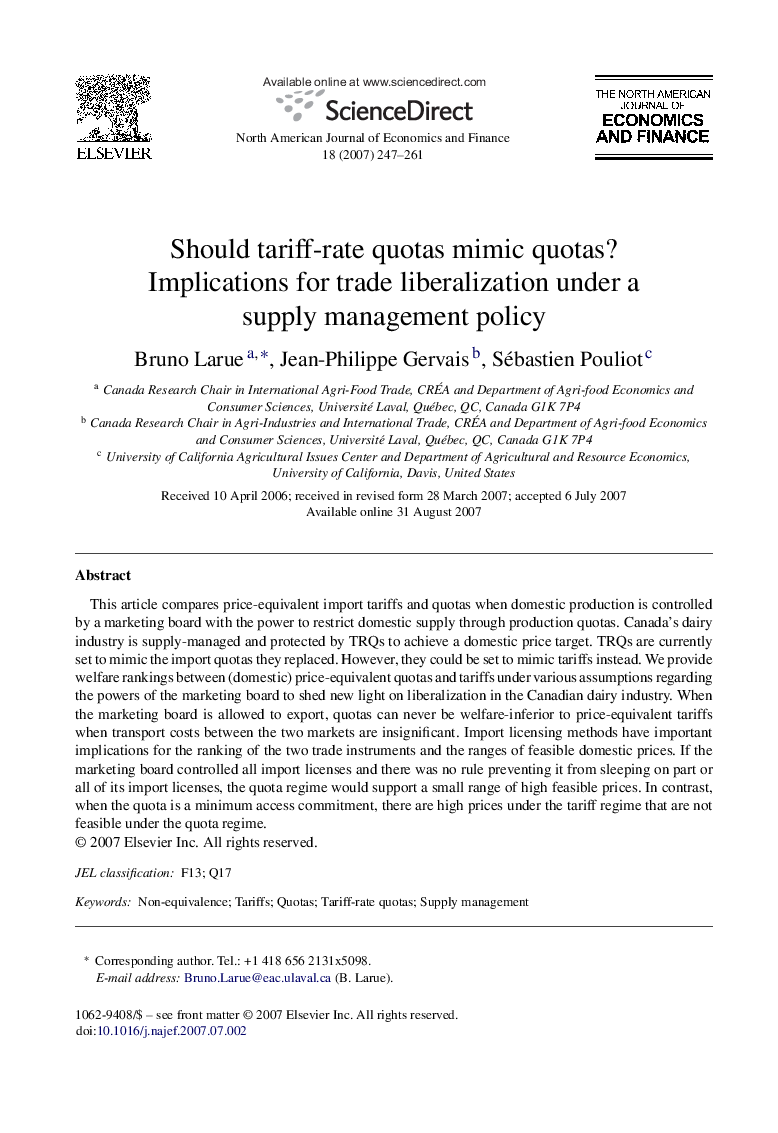| کد مقاله | کد نشریه | سال انتشار | مقاله انگلیسی | نسخه تمام متن |
|---|---|---|---|---|
| 974419 | 1479806 | 2007 | 15 صفحه PDF | دانلود رایگان |

This article compares price-equivalent import tariffs and quotas when domestic production is controlled by a marketing board with the power to restrict domestic supply through production quotas. Canada's dairy industry is supply-managed and protected by TRQs to achieve a domestic price target. TRQs are currently set to mimic the import quotas they replaced. However, they could be set to mimic tariffs instead. We provide welfare rankings between (domestic) price-equivalent quotas and tariffs under various assumptions regarding the powers of the marketing board to shed new light on liberalization in the Canadian dairy industry. When the marketing board is allowed to export, quotas can never be welfare-inferior to price-equivalent tariffs when transport costs between the two markets are insignificant. Import licensing methods have important implications for the ranking of the two trade instruments and the ranges of feasible domestic prices. If the marketing board controlled all import licenses and there was no rule preventing it from sleeping on part or all of its import licenses, the quota regime would support a small range of high feasible prices. In contrast, when the quota is a minimum access commitment, there are high prices under the tariff regime that are not feasible under the quota regime.
Journal: The North American Journal of Economics and Finance - Volume 18, Issue 3, December 2007, Pages 247–261